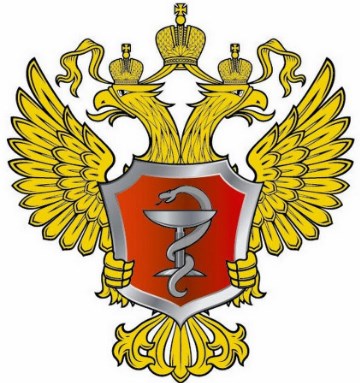Ent department – otology
Otology is a branch of medicine which studies normal/pathological anatomy and physiology of the ear (hearing and vestibular sensory systems and related structures and functions) as well as its diseases, diagnosis and treatment. The Ear’s Disease Department under the leadership of Professor Diab Khassan has been effectively treating all kinds of the ear diseases including ear infections, cholesteatomas, Otosclerosis, tumours and facial nerve diseases, profoundly deaf and congenital ear malformation.
Surgical treatment of the Otosclerosis
Otosclerosis is a familial hereditary disease that affects the ear, frequently involving both sides. It is a disease of the labyrinthine capsule characterized by bony resorption and subsequent formation of new bone.
Otosclerosis is characterised by progressive hearing loss, usually conductive or mixed type, which is either associated with or without tinnitus (ringing or buzzing in the ear) and balance can be affected slightly. It is mainly seen in adults predominantly in women. In case the patient has hearing loss of conductive type, we perform Stapedoplasty allowing recovery of auditory function.
Otitis media, cholesteatomas: various types of surgery
 Otitis media (Latin for "inflammation of the middle ear") is the medical term for middle ear infection. The types of Otitis media are Acute otitis media, Otitis media with effusion, Chronic suppurative otitis media and Adhesive otitis media. Acute otitis media, Otitis media with effusion are more common for children while Chronic suppurative otitis media is common for adults.
Otitis media (Latin for "inflammation of the middle ear") is the medical term for middle ear infection. The types of Otitis media are Acute otitis media, Otitis media with effusion, Chronic suppurative otitis media and Adhesive otitis media. Acute otitis media, Otitis media with effusion are more common for children while Chronic suppurative otitis media is common for adults.
We perform the sanitation ear simultaneously with tympanoplasty in case of Chronic suppurative otitis media with cholesteatomas.
Surgical treatment of the Paragangliomas
 About 97% are benign and cured by surgical removal. Paragangliomas are still sometimes called glomus tumors and chemodectomas, but paraganglioma is the currently accepted and preferred term. There are three types in the head & neck - Glomus tympanicum and Glomus jugulare, Carotid paraganglioma (carotid body tumor) & Vagal paragangliomas. We perform surgical remove paragangliomas of lateral skull base type A, B, and C (with neck expansion).
About 97% are benign and cured by surgical removal. Paragangliomas are still sometimes called glomus tumors and chemodectomas, but paraganglioma is the currently accepted and preferred term. There are three types in the head & neck - Glomus tympanicum and Glomus jugulare, Carotid paraganglioma (carotid body tumor) & Vagal paragangliomas. We perform surgical remove paragangliomas of lateral skull base type A, B, and C (with neck expansion).
Paralysis of the facial nerve
 Paralysis of the facial nerve is a cause of significant functional and aesthetic compromise. Functional concerns primarily involve adequate protection of the eye, with a real risk of exposure keratitis if not properly addressed. In addition, swallowing, drooling, and speech difficulties may arise. Microsurgical repair of the damaged facial nerve (7th cranial nerve) is the most effective procedure for restoring motor function (voluntary movement) of the face. Reconstruction is indicated in patients who have experienced acute disruption or transection of the nerve from an accident, trauma, resection during extirpation of tumors, or inadvertent division during surgery. The ultimate goal of reanimation surgery is to restore spontaneous animation and a balanced natural smile. The most critical factor in achieving good post-operative facial function is early identification and repair.
Paralysis of the facial nerve is a cause of significant functional and aesthetic compromise. Functional concerns primarily involve adequate protection of the eye, with a real risk of exposure keratitis if not properly addressed. In addition, swallowing, drooling, and speech difficulties may arise. Microsurgical repair of the damaged facial nerve (7th cranial nerve) is the most effective procedure for restoring motor function (voluntary movement) of the face. Reconstruction is indicated in patients who have experienced acute disruption or transection of the nerve from an accident, trauma, resection during extirpation of tumors, or inadvertent division during surgery. The ultimate goal of reanimation surgery is to restore spontaneous animation and a balanced natural smile. The most critical factor in achieving good post-operative facial function is early identification and repair.
Microtia (pinna) and congenital malformation of the external auditory canal reconstruction
 Microtia is a congenital deformity where the pinna (external ear) is underdeveloped. A completely undeveloped pinna is referred to as anotia. Because microtia and anotia have the same origin, it can be referred to as microtia-anotia. Aural atresia is the underdevelopment of the middle ear and canal and usually occurs in conjunction with microtia. Atresia occurs because patients with microtia may not have an external opening to the ear canal, though. However, the cochlea & other inner ear structures are usually present. Candidacy for atresia surgery is based on the hearing test (audiogram) & CT scan imaging. Specialists of our department perform surgical treatment of isolated middle ear malformations (patients with normal eardrum and non-progressive conductive hearing loss).
Microtia is a congenital deformity where the pinna (external ear) is underdeveloped. A completely undeveloped pinna is referred to as anotia. Because microtia and anotia have the same origin, it can be referred to as microtia-anotia. Aural atresia is the underdevelopment of the middle ear and canal and usually occurs in conjunction with microtia. Atresia occurs because patients with microtia may not have an external opening to the ear canal, though. However, the cochlea & other inner ear structures are usually present. Candidacy for atresia surgery is based on the hearing test (audiogram) & CT scan imaging. Specialists of our department perform surgical treatment of isolated middle ear malformations (patients with normal eardrum and non-progressive conductive hearing loss).
Cochlear Implants (CI): cases of normal, malformed and ossified cochlea
A cochlear implant (CI) is a surgically implanted electronic device that provides a sense of sound to a person who is profoundly deaf or severely hard of hearing. Cochlear implants are often called bionic ears. Cochlear implants may help provide hearing in patients that are deaf because of damage to sensory hair cells in their cochleas. In those patients, the implants often can enable sufficient hearing for better understanding of speech. Newer devices and processing-strategies allow recipients to hear better in noise, enjoy music, and even use their implant processors while swimming.
Meniere's disease
 Ménière's disease is a disorder of the inner ear that can affect hearing and balance to a varying degree. It is characterized by episodes of vertigo, low-pitched tinnitus, and hearing loss. The hearing loss is fluctuating rather than permanent, meaning that it comes and goes, alternating between ears for some time, then becomes permanent with no return to normal function. The cause of Ménière's disease is believed to be linked to endolymphatic hydrops, an excess of fluid in the inner ear. Endolymphatic sac drainage is most efficiently type of surgery treatment that performs in Ear’s Disease Department
Ménière's disease is a disorder of the inner ear that can affect hearing and balance to a varying degree. It is characterized by episodes of vertigo, low-pitched tinnitus, and hearing loss. The hearing loss is fluctuating rather than permanent, meaning that it comes and goes, alternating between ears for some time, then becomes permanent with no return to normal function. The cause of Ménière's disease is believed to be linked to endolymphatic hydrops, an excess of fluid in the inner ear. Endolymphatic sac drainage is most efficiently type of surgery treatment that performs in Ear’s Disease Department
Cadaveric temporal bone dissection course
This 5 day course is designed for ENT consultants, otology fellows, and residents to improve surgical skills. The course has a clinical and a practical part, i.e. dissection in the temporal bone laboratory. The course of the temporal bone dissection as close to the actual methods of the ear surgery. Progression through the dissection will be performed under close supervision of trainers and paced at an appropriate level to the participant. The extent of dissection, and other procedures, carried out by each individual trainee tailored to their level of experience. The course will be given in English or Russian languages. Course director - Prof. Diab Khassan








